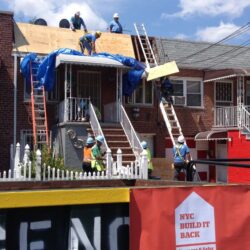
Is Your Home Ready for Winter?

(StatePoint) Its time to start preparing your home to make sure it can efficiently handle colder weather.
There are many small, low-hassle items you can complete to winterize your home, says David Andreozzi, principal of Andreozzi Architects and the American Institute of Architects (AIA) National Chair of CRAN, the AIAs Custom Residential Architects Network. Prepping your home for the season ensures you arent dealing with major issues when they are harder to tackle, and can prevent costly repairs come springtime.To help homeowners prepare, Andreozzi offers the following advice.Check Chimneys and GuttersRegular checks of your chimneys and gutters are both safety-smart and wallet-friendly. Fireplace dampers should be closed and functioning properly to protect against drafts and keep heating costs down. Leaving a damper open or using a broken one is the equivalent to leaving a window open when the air conditioner is running.While sometimes not as noticeable as a chimney draft, ice is another danger. It can build up in gutters quickly if there is debris there from previous seasons. In order for ice to melt and drain properly, drains must be clear. Clean your gutters when its warm to prevent clogs and costly replacements.Remember Watering SystemsThis is especially important for new home buyers who may not think to look for this. Water trapped in an outdoor faucet, spigot or irrigation system can cause a pipe to burst if ice settles inside. Make it part of your winterizing routine to ensure that outdoor plumbing and pipes are clear before temperatures drop.Designing for WeatherIn the design process of your home, it is important that your home is sealed correctly to account for local weather. An architect can advise on how to prevent unwanted drafts. If you have an older home or apartment, use self-adhesive weather stripping to seal cracks in windows and doors, too.Create a TimetableThe change of seasons means maintenance. Create a checklist of tasks with a timetable so you are never scrambling at the last minute. Small items that often slip between the cracks can be taken care of in a timely fashion — like changing batteries in smoke detectors or cleaning the pilots of the heating system.Andreozzi recommends using a professional twice a year to help tick off some of the trickier items, such as sealing windows. To ensure that youre hitting all of the pain points, an architect can help you formulate a full checklist to make the most out of your prep work.To find an architect in your area, visit http://architectfinder.aia.org/.By preparing now, you can save time and money later.*****Photo Credit: (c) Photographee.eu – Fotolia.com
Leave a Comment
Leave a Comment

